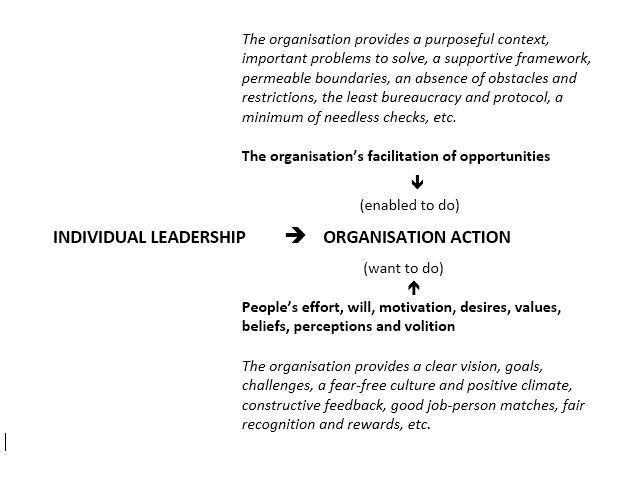
Can do. But want to do? Enabled to do?
In terms of the inputs-outputs-outcomes continuum, conventional development primarily concentrates its expertise on the efficacy of the inputs. But if potential is to be realised, it requires two further ingredients: will and opportunity.
In the view of the coach Timothy Gallwey, ‘performance is potential minus interference’. He is referring to personal psychological obstacles, but the concept can be extended to the organisational level.
Instead of concentrating solely on developing individual managers’ can-do skills, recognise the part also played by their will/effort (wanting to do) and work opportunities (enabled to do). The organisation plays a key role in shaping people’s perceptions in these two respects, whether deliberately or by default. (See diagram)

Figure: Converting individual leadership ability into organisational action
Most development activity enhances can-do potential but does nothing about interference from above or below. The organisation can play a role in both boxes in the diagram. Not only does it provide the opportunities and a conducive environment in which managers can apply their leadership capability (the top box), it also helps to shape managers’ perceptions and beliefs (the bottom box).
Based on extracts from Chapter 8, ‘Leadership and Learning’ in The Search for Leadership: An Organisational Perspective
